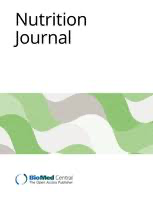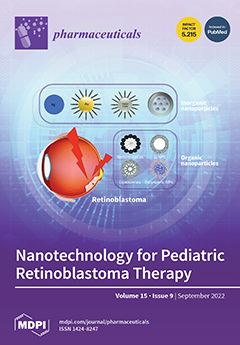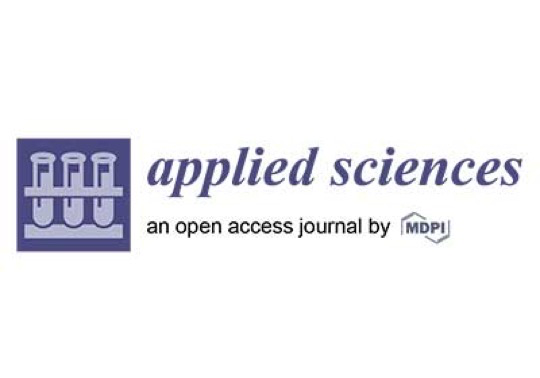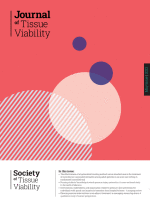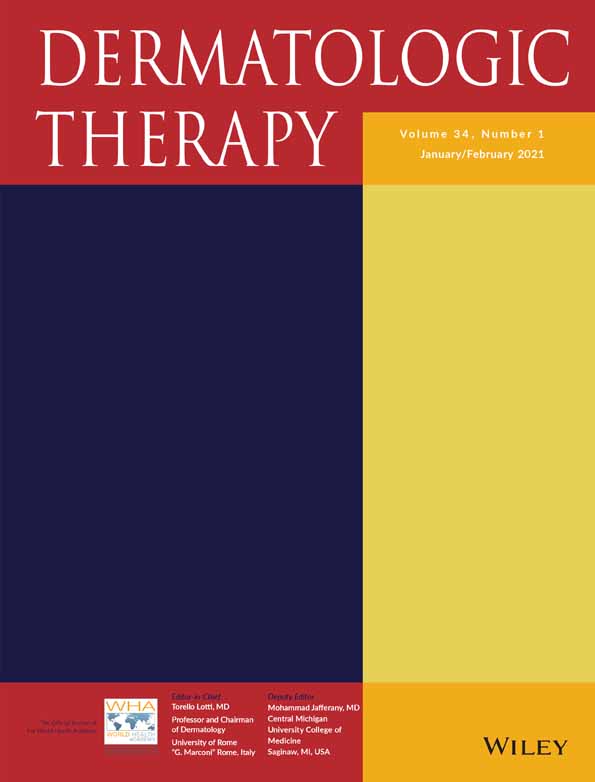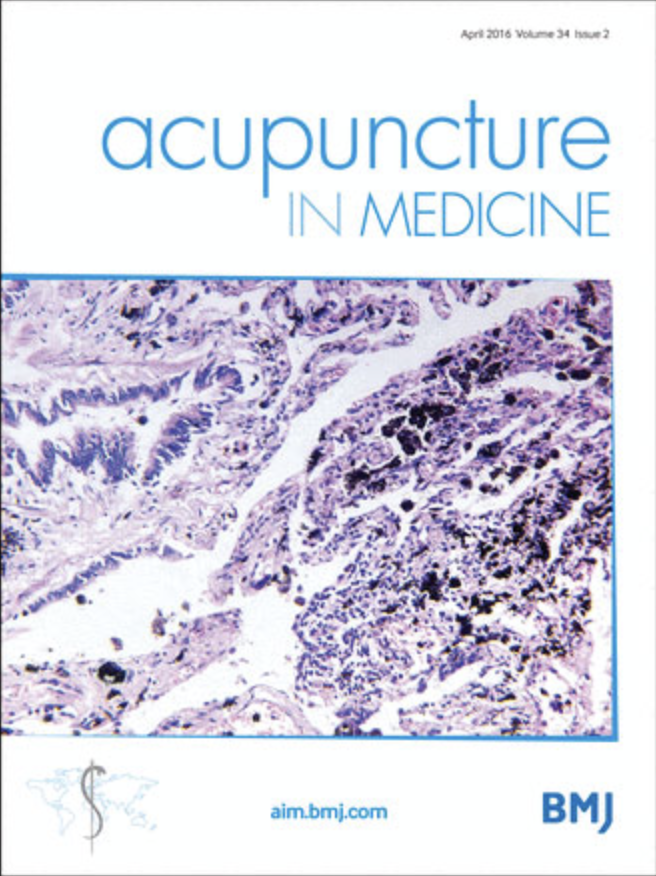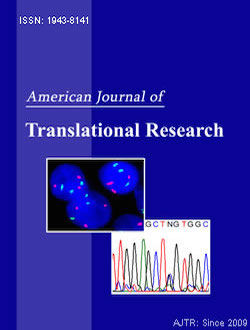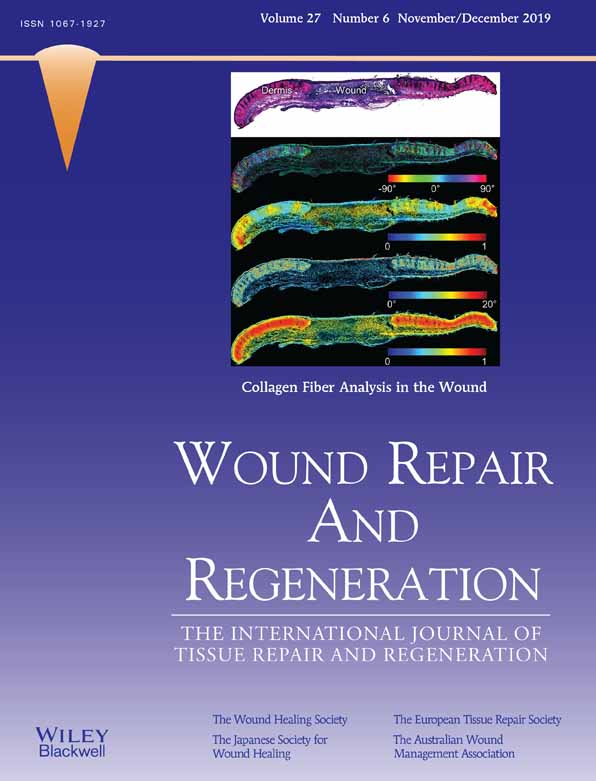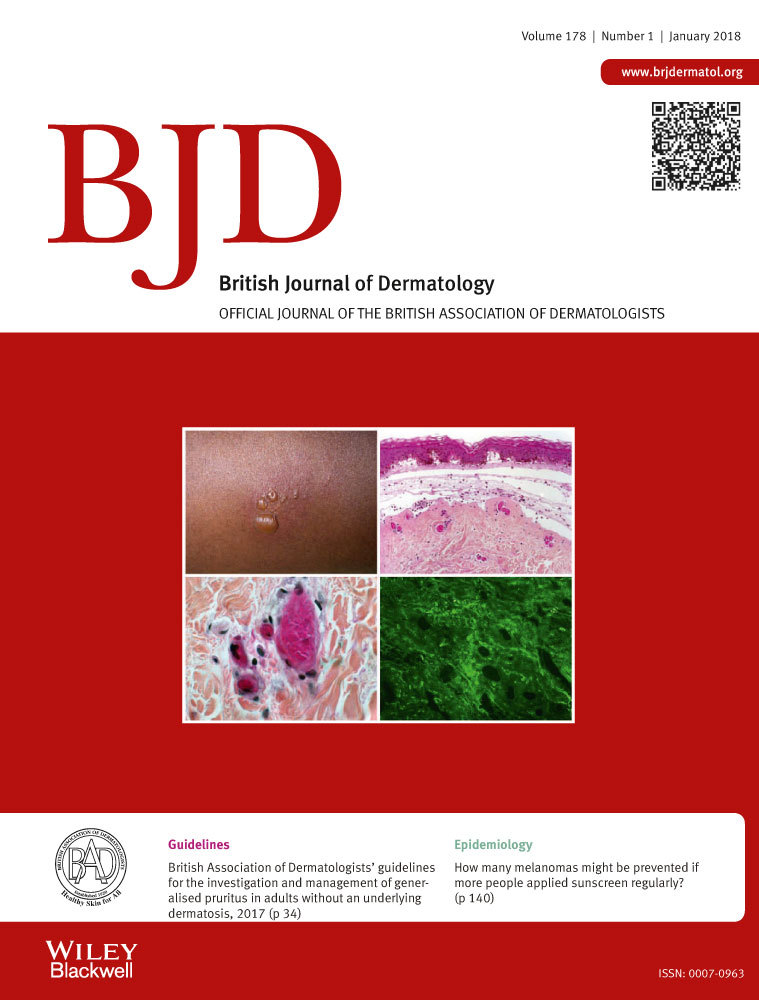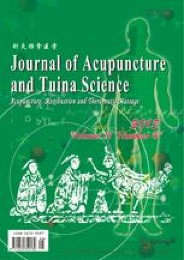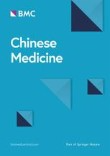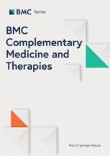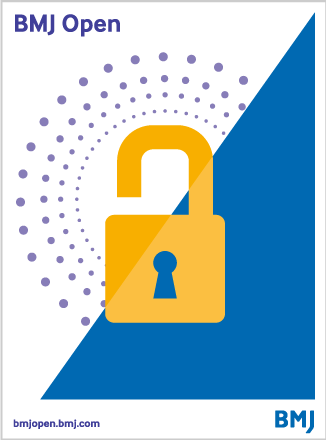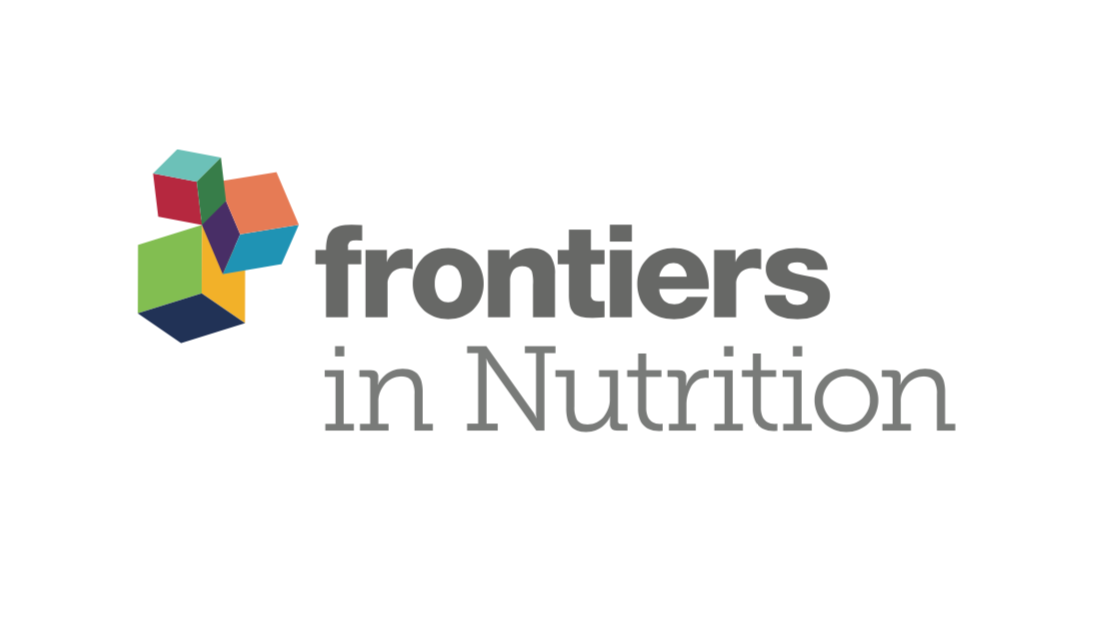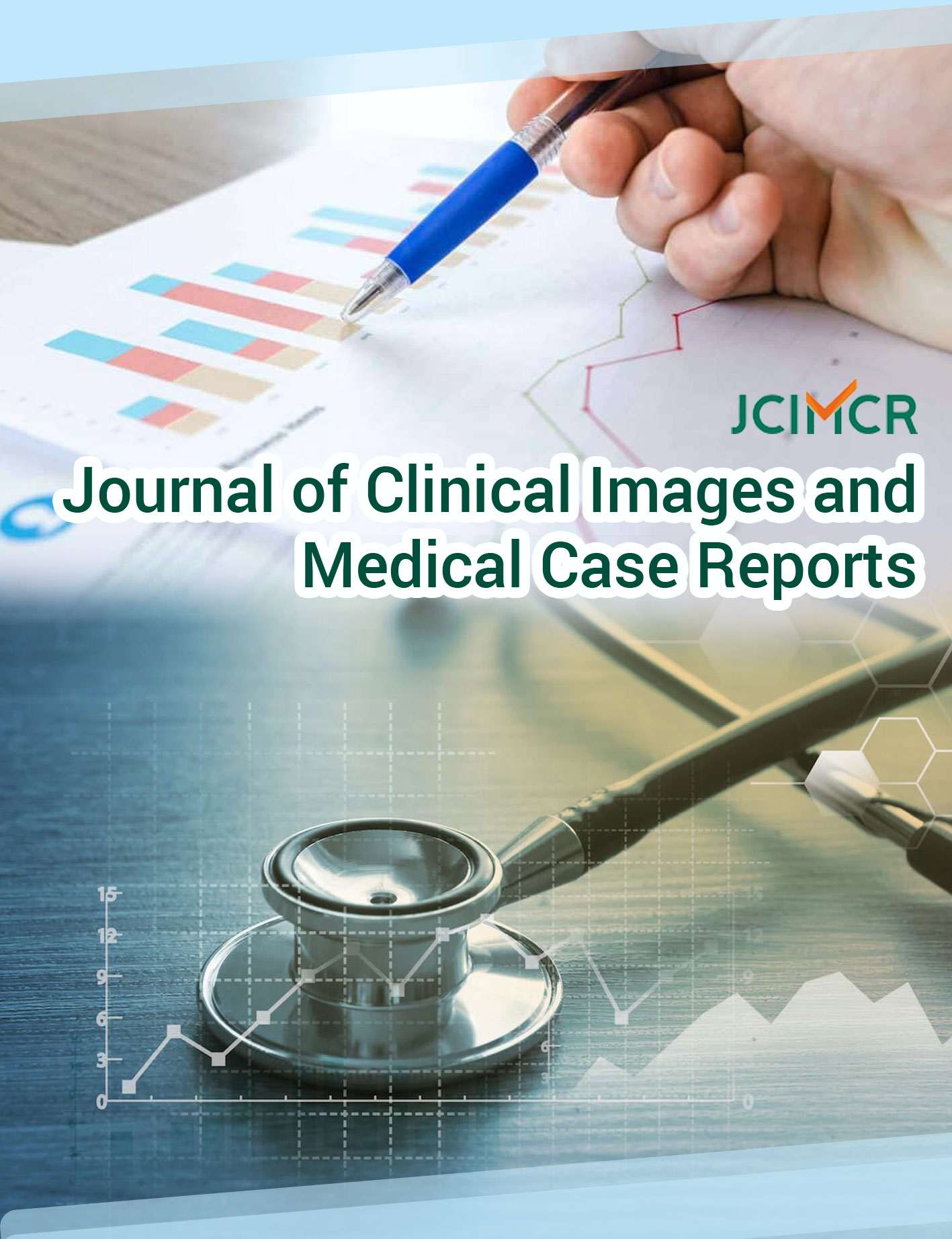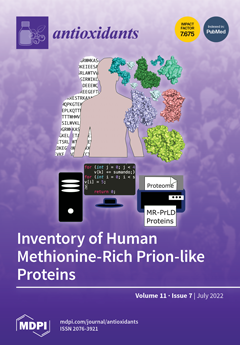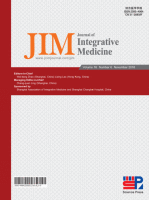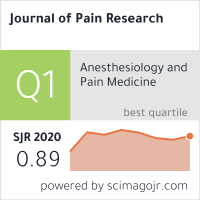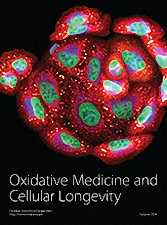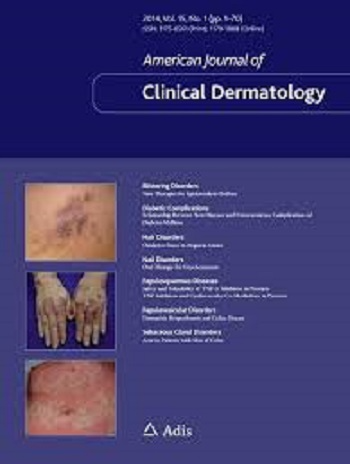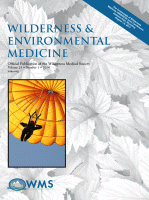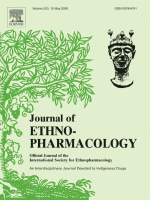Presentation Slides
Chinese Medicine Research Hub
Cohort Study
Higher consumption of ultra-processed food by pregnant women was linked to an increased risk of infantile atopic dermatitis within the first year of life.
2024 Nutrition Journal Association of maternal ultra-processed food consumption during pregnancy with atopic dermatitis in infancy: Korean Mothers and Children’s Environmental Health (MOCEH) study
Jang W, Kim M, Ha E, Kim H
Chinese Medicine Research Hub
Review Article
Lemongrass essential oil can effectively treat periodontitis, gingivitis, oral malodour, skin aging, and dandruff, and it is comparable to certain established treatments.
2024 Pharmaceuticals Exploring the Clinical Applications of Lemongrass Essential Oil: A Scoping Review
Kusuma IY, Perdana MI, Vágvölgyi C, Csupor D, Takó M
Chinese Medicine Research Hub
Review Article
Honey accelerates the healing of diabetic foot ulcers, reduces wound size, and lowers the rates of amputation or hospitalisation, making it a cost-effective and safe treatment.
2023 Applied Sciences Honey Therapy in Diabetic Foot Ulcers: A Promising Strategy for Effective Wound Healing
Bezerra A, Fonseca H, Rodrigues F, Delerue-Matos C, Gouvinhas I, Garcia J
Chinese Medicine Research Hub
Systematic Review
Honey dressing significantly promotes healing and reduces recovery time in managing diabetic foot ulcers.
2023 Journal of Tissue Viability Use of honey in diabetic foot ulcer: Systematic review and meta-analysis
Yildiz Karadeniz E, Kaplan Serin E
Chinese Medicine Research Hub
Systematic Review
Long Dan Xie Gan formula used as an adjuvant therapy may hasten skin healing, relieve pain symptoms, and prevent persistent pain in acute herpes zoster patients.
2022 Dermatologic Therapy Longdan Xiegan formula as adjuvant therapy for acute herpes zoster: A meta‐analysis of randomized controlled trials
Zhang L, Duan A, Li Y, Feng J
Chinese Medicine Research Hub
Systematic Review
Chinese herbal medicine (CHM) improved AD symptoms but had no significant impact on patients' quality of life or IgE levels suggesting CHM's potential as an AD treatment with further research.
2022 Frontiers in Pharmacology Efficacy and safety of Chinese herbal medicine for atopic dermatitis: Evidence from eight high-quality randomized placebo-controlled trials
Cai X, Sun X, Liu L, Zhou Y, Hong S, Wang J, Chen J, Zhang M, Wang C, Lin N, Li S, Xu R, Li X
Chinese Medicine Research Hub
Systematic Review
Acupuncture coupled with traditional Chinese medicine may be more effective and safer than conventional Western medicine in treating chronic urticaria.
2022 Medicine Efficacy and safety of Chinese medicine combined with acupuncture in the treatment of chronic urticaria: A meta-analysis
Lu Z, Zhou Q, Chai S, Yang H, Wang J, Luo H, Cao Y, Tao M
Chinese Medicine Research Hub
Experimental Study
Oral administration of Tremella fuciformis polysaccharides may constitute a new, effective therapy for Atopic dermatitis, improving both immune response and intestinal microbiota.
2022 Frontiers in Pharmacology Tremella fuciformis polysaccharides alleviate induced atopic dermatitis in mice by regulating immune response and gut microbiota
Xie L, Yang K, Liang Y, Zhu Z, Yuan Z, Du Z
Chinese Medicine Research Hub
Systematic Review
Traditional Chinese medicine, including acupuncture, can provide superior pain relief and faster recovery for HIV-related Herpes Zoster compared to regular drugs.
2022 Evidence-Based Complementary and Alternative Medicine Traditional Chinese Medicine for HIV-Associated Acute Herpes Zoster: A Systematic Review and Meta-Analysis of Randomized Trials
Jiang Y, Zheng RX, Yu ZY, Zhang XW, Li J, Lan HD, Qiao SY, Han M, Cao HJ, Robinson N, Liu JP
Chinese Medicine Research Hub
Cohort Study
Processed food consumption, particularly pickles and processed meats, is linked with atopic dermatitis in Chinese adults.
2021 Frontiers in Nutrition Processed Food and Atopic Dermatitis: A Pooled Analysis of Three Cross-Sectional Studies in Chinese Adults
Li Y, Su J, Luo D, Duan Y, Huang Z, He M, Tao J, Xiao S, Xiao Y, Chen X, Shen M
Chinese Medicine Research Hub
Randomised Controlled Trial
Using a combined treatment of modified Buzhong Yiqi decoction and Gangtai ointment improves wound healing and anal function for circumferential mixed hemorrhoid patients.
2021 American Journal of Translational Research The effects of modified Buzhong Yiqi decoction combined with Gangtai ointment on the wound healing and anal function in circumferential mixed hemorrhoid patients
Lu B, Du J, Wu X
Chinese Medicine Research Hub
Systematic Review
Long Dan Xie Gan Decoction combined with valacyclovir appears to enhance the treatment of herpes zoster, improving pain intensity, and crust formation time.
2021 Journal of Clinical Images and Medical Case Reports Efficacy and safety of Chinese herbal medicine longdanxiegan decoction combined with val-acyclovir in herpes zoster: A systematic review and mate-analysis
Wang X, , Wu L, Hou Y, Ding S, Wang S, Zhang Y, Zhang G, , , , , ,
Chinese Medicine Research Hub
Experimental Study
Pomegranate juice extract (PPJE) appears to reduce chemotherapy-induced skin side effects by inhibiting inflammation and promoting wound repair on the skin.
2021 Antioxidants Protective Effect of Pomegranate on Oxidative Stress and Inflammatory Response Induced by 5-Fluorouracil in Human Keratinocytes
Rapa SF, Magliocca G, Pepe G, Amodio G, Autore G, Campiglia P, Marzocco S
Chinese Medicine Research Hub
Systematic Review
Moving cupping therapy, alone or coupled with other treatments, could effectively alleviate symptoms of plaque psoriasis with minimal side effects.
2020 Medicine Moving cupping therapy for plaque psoriasis
Xing M, Ding X, Zhang J, Kuai L, Ru Y, Sun X, Ma T, Miao X, Liu L, Wang Y, Li B, Li X
Chinese Medicine Research Hub
Systematic Review
Traditional Chinese medicine could potentially serve as an effective alternative therapy for managing Psoriasis vulgaris.
2020 Journal of Dermatological Treatment Evidence and potential mechanisms of traditional Chinese medicine for the treatment of psoriasis vulgaris: a systematic review and meta-analysis
Dai D, Wu H, He C, Wang X, Luo Y, Song P
Chinese Medicine Research Hub
Systematic Review
Cupping therapy, as an adjunct to current treatments, may potentially enhance efficacy when treating patients with chronic urticaria.
2020 Journal of Integrative Medicine Cupping therapy for patients with chronic urticaria: A systematic review and meta-analysis
Xiao, X., Zhang, L., Shi, Y., Yao, J., Cao, W., Liu, Y., Zou, Z., Zhou, S., Chen, M., Li, C., Zheng, Q., & Li, Y.
Chinese Medicine Research Hub
Randomised Controlled Trial
The herbal medicine Bu Zhong Yi Qi Yang can potentially promote healing in chronic wounds resistant to standard treatments, especially in malnourished patients.
2019 Wound Repair and Regeneration The beneficial effect of traditional Japanese herbal (Kampo) medicine, Hochu‐ekki‐to (Bu‐Zhong‐Yi‐Qi‐Tang), for patients with chronic wounds refractory to conventional therapies: A prospective, randomized trial
Akita S, Namiki T, Kawasaki Y, Rikihisa N, Ogata H, Tokumoto H, Tezuka T, Kubota Y, Kuriyama M, Nakamura M, Mitsukawa N
Chinese Medicine Research Hub
Systematic Review
Acupuncture shows potential in reducing pain intensity, alleviating anxiety, and improving quality of life for patients suffering from postherpetic neuralgia.
2019 Journal of Pain Research Is acupuncture an effective postherpetic neuralgia treatment? A systematic review and meta-analysis
Pei, W., Zeng, J., Lu, L., Lin, G., & Ruan, J.
Chinese Medicine Research Hub
Systematic Review
There is limited evidence that acupuncture is safe and might be effective in pain relieving for patients with postherpetic neuralgia.
2018 Medicine Acupuncture for postherpetic neuralgia: Systematic review and meta-analysis
Wang, Yang., Li, Wang., Peng, Weina., Zhou, Jing., Liu, Zhishun
Chinese Medicine Research Hub
Systematic Review
Acupuncture has similar efficacy compared to pharmacotherapies for acne vulgaris, however acupuncture interventions reported less adverse effects and may be a treatment option.
2018 Evidence-Based Complementary and Alternative Medicine Acupuncture for Acne Vulgaris: A Systematic Review and Meta-Analysis
Mansu SSY, Liang H, Parker S, Coyle ME, Wang K, Zhang AL, Guo X, Lu C, Xue CCL
Chinese Medicine Research Hub
Review Article
Honeybee products like honey, propolis, and royal jelly have demonstrated potential benefits in treating metabolic diseases, cancers, and other illness types.
2017 Oxidative Medicine and Cellular Longevity Honey, Propolis, and Royal Jelly: A Comprehensive Review of Their Biological Actions and Health Benefits
Pasupuleti VR, Sammugam L, Ramesh N, Gan SH
Chinese Medicine Research Hub
Systematic Review
There is at least some level I evidence to support the use of acupuncture and acupressure as adjuncts to conventional treatment of atopic dermatitis.
2016 American Journal of Clinical Dermatology Complementary and Alternative Medicine for Atopic Dermatitis: An Evidence-Based Review
Vieira BL, Lim NR, Lohman ME, Lio PA.
Chinese Medicine Research Hub
Systematic Review
Acupuncture improves outcome measures in the treatment of dermatitis, chloasma, pruritus, urticaria, hyperhidrosis, and facial elasticity.
2015 Journal of Acupuncture and Meridian Studies Acupuncture as a treatment modality in dermatology: a systematic review
Ma, C., & Sivamani, R. K.
Chinese Medicine Research Hub
Systematic Review
Acupuncture is effective for ameliorating itch intensity in itch-related diseases.
2015 Evidence-Based Complementary and Alternative Medicine Efficacy of Acupuncture in Itch: A Systematic Review and Meta-Analysis of Clinical Randomized Controlled Trials
Chi Yu, Pei Zhang, Zheng-Tao Lv, Jing-Jing Li, Hong-Ping Li, Cai-Hua Wu, Fang Gao, Xiao-Cui Yuan, Jing Zhang, Wei He, Xiang-Hong Jing, Man Li,
Chinese Medicine Research Hub
Review Article
Honey has shown to be a safe and occasionally superior treatment for various wounds compared to current treatments, even in wilderness environments.
2014 Wilderness & Environmental Medicine Wound Care in the Wilderness: Is There Evidence for Honey?
Stewart JA, McGrane OL, Wedmore IS
Chinese Medicine Research Hub
Experimental Study
The extract from Chrysanthemum Indicum Linné effectively reduces inflammation in mouse skin when induced, hinting at potential therapeutic applications for immune-related skin diseases.
2009 Journal of Ethnopharmacology Anti-inflammatory activity of Chrysanthemum indicum extract in acute and chronic cutaneous inflammation
Lee DY, Choi G, Yoon T, Cheon MS, Choo BK, Kim HK
Executive Summary
Write an executive summary in the form of a blog article on the topic of "Research into Chinese medicine treatment for Skin Conditions" summarising the research below and using language that can be easily understood by patients and avoiding medical jargon using a professional and caring tone of voice.
Write an executive summary in the form of a blog article on the topic of "Researched Chinese medicine treatments for Skin Conditions" summarising the research below in an objective and easy to understand way, and using language that can be easily understood by patients. Group the article into Chinese medicine treatments first, followed by nutrition and other treatments. Avoid using medical jargon and use a professional and caring tone of voice.
Write me a concise but easy to understand executive summary on the topic of "Chinese medicine treatments for Skin Conditions" based on the following research that I will give you. Your summary should be 2 paragraphs long in Australian English spelling and include references to the studies.
A Cohort Study published in 2024 in the journal Nutrition Journal found that Higher consumption of ultra-processed food by pregnant women was linked to an increased risk of infantile atopic dermatitis within the first year of life. The research used 861 pairs of pregnant women and their offspring from the Mothers' and Children's Environmental Health project in Korea. These women’s dietary intake was measured using the 24-hour recall method during 12-28 weeks gestation. Foods were classified as ultra-processed following the NOVA classification and their consumption was calculated as the proportion of total energy intake, with participants categorized into quartiles. The prevalence of infantile atopic dermatitis was assessed based on their medical histories and according to the International Study of Asthma and Allergies in Childhood criteria.
The results revealed that children born to mothers in the highest quartile of ultra-processed food consumption, compared to the lowest quartile, showed a higher risk towards atopic dermatitis within 12 months. This relationship became stronger after adjusting for certain confounding variables. Additionally, the link stayed consistent even after adjusting based on the Korean Healthy Eating Index, which measures diet quality.
A Review Article published in 2024 in the journal Pharmaceuticals found that Lemongrass essential oil can effectively treat periodontitis, gingivitis, oral malodour, skin aging, and dandruff, and it is comparable to certain established treatments. The methodology used in the research followed a scoping review design, which was aimed at identifying, summarizing, and synthesizing existing literature related to the clinical applications of lemongrass essential oil. Three databases, namely PubMed, Web of Science, and Scopus, were utilized, following the PRISMA-ScR guidelines, to find articles published within approximately a 10-year timeframe.
The results of the review suggest that patients have received noticeable therapeutic benefits from treatments that were primarily administered oromucosally and topically. It can be deduced that the efficacy of lemongrass essential oil in treating periodontitis, gingivitis, and oral malodour is similar to that of chlorhexidine and doxycycline. Moreover, the oil has demonstrated potential in treating skin conditions such as pityriasis versicolor, preventing skin aging, and having anti-dandruff effects. The diverse range of applications of the oil and its efficacy when compared to established treatments highlight its potential for clinical applications.
A Review Article published in 2023 in the journal Applied Sciences found that Honey accelerates the healing of diabetic foot ulcers, reduces wound size, and lowers the rates of amputation or hospitalisation, making it a cost-effective and safe treatment. The methodology of the review incorporated studies exploring the effects of honey on wound healing, emphasizing its impact on diabetic foot ulcers (DFUs). Different types of honey and their potential influence on treatment efficacy were considered. The review also scrutinised the mechanisms by which honey promotes wound healing and how honey dressings are utilized in the management of diabetic wounds. Nonetheless, it was noted that few of the studies provided comprehensive data regarding the specific characteristics of the employed honey, affecting the comparison across honey types.
The discussion of the results found in most clinical studies indicated that DFUs treated with honey resulted in rapid wound healing, substantial wound contraction, and decreased rates of amputation or hospitalisation. The properties of honey - serving as an effective antibacterial agent against multidrug-resistant bacteria and fostering wound healing through its physical-chemical attributes - were found to be the underlying reasons for these positive outcomes. Furthermore, honey was deemed to be a cost-effective and safe option for managing DFUs.
A Systematic Review published in 2023 in the journal Journal of Tissue Viability found that Honey dressing significantly promotes healing and reduces recovery time in managing diabetic foot ulcers. For the research methodology, the study used a combination of randomized controlled trials, quasi-experimental, and cross-sectional studies. Only the randomized controlled trials and quasi-experimental studies were chosen for the meta-analysis, while observational studies were subject to a descriptive analysis.
In terms of the results discussion, the meta-analysis indicated that using honey as a dressing for diabetic foot ulcers resulted in a reduction in wound recovery time, pain experienced, duration of hospital stay, and an acceleration in wound granulation. Therefore, it was concluded that honey dressing is an effective intervention for accelerating healing in diabetic foot ulcers.
A Systematic Review published in 2022 in the journal Dermatologic Therapy found that Long Dan Xie Gan formula used as an adjuvant therapy may hasten skin healing, relieve pain symptoms, and prevent persistent pain in acute herpes zoster patients. For the methodology, multiple databases such as PubMed, Embase, Cochrane Library, China National Knowledge Infrastructure, Chinese Scientific Journal Database, and Wanfang were searched by two independent authors for relevant randomized controlled trials (RCT) until July 31, 2021. The chosen studies analysed the additive effects of LDXG formula, in different forms such as decoction, capsule, or pill, for acute herpes zoster management. Nine RCTs fitting the criteria were selected, totaling 821 patients for the meta-analysis.
Concerning the results, statistical analysis using a random effect model revealed that adding LDXG formula to conventional therapy noticeably shortened the time of blister resolution, crust formation, and pain resolution. It also reduced the pain intensity and incidence of lingering pain for those with acute herpes zoster in comparison to conventional treatment alone. Yet, this evidence was assessed as being of very low to moderate certainty, indicating interpretation of these results should be cautious due to statistical heterogeneity and/or an unclear risk of bias existing.
A Systematic Review published in 2022 in the journal Frontiers in Pharmacology found that Chinese herbal medicine (CHM) improved AD symptoms but had no significant impact on patients' quality of life or IgE levels suggesting CHM's potential as an AD treatment with further research. CHM showed benefits in improving AD symptoms, such as itching and skin appearance, compared to placebos. However, it didn't significantly affect patients' quality of life or IgE levels. CHM was safe, with only minor side effects. These findings suggest CHM could be a useful treatment for AD, but more standard guidelines are needed due to variations in herbal ingredients and dosages in different studies.
A Systematic Review published in 2022 in the journal Medicine found that Acupuncture coupled with traditional Chinese medicine may be more effective and safer than conventional Western medicine in treating chronic urticaria. To compare the efficacy of acupuncture with traditional Chinese medicine to conventional Western medicine, several databases, including Pubmed, Embase, Cochrane Library, CNKI, Wanfang, CQVIP, and CBM, were searched until August 2021. The criterion for inclusion were randomized control trials where the experimental group was treated with acupuncture and traditional Chinese medicine, and the control group with conventional Western medicine. Studies were excluded if they were repeated publications, lacked full text, incomplete in information, or incapable of data extraction. Animal experiments, reviews, and systematic reviews were also disregarded. Data analysis was conducted using STATA 15.1 software.
The analyzed results revealed that the total effective rate of the group treated with acupuncture and traditional Chinese medicine was noticeably higher than those treated with conventional Western medicine. Additionally, this group showed considerably lower Urticaria Activity Scores and pruritus scores compared to those treated with Western medicine. However, there was no substantial difference shown in the wheal score between both groups. Significantly, the recurrence rate and the incidence rate of adverse events in the group treated with acupuncture and traditional Chinese medicine were markedly lower than the other group. This highlights the greater effectiveness and safety of the combination of acupuncture and traditional Chinese medicine for chronic urticaria compared to Western medicine.
A Experimental Study published in 2022 in the journal Frontiers in Pharmacology found that Oral administration of Tremella fuciformis polysaccharides may constitute a new, effective therapy for Atopic dermatitis, improving both immune response and intestinal microbiota. In the methodology of this study, the therapeutic effects of Tremella fuciformis polysaccharides (these have multiple biological activities), on Atopic dermatitis, were examined through both topical application and oral administration on mice induced with Atopic dermatitis-like disorder. The changes across transdermal water loss, epidermal thickening, and ear edema in the affected mice were observed. Notably, the study also considered the polysaccharides' impacts on the proportion of specific regulatory T cells in the mesenteric lymph nodes of the mice.
The results showed that both therapeutic methods positively impacted the conditions of the affected mice, with oral administration offering superior efficacy over topical application. The oral administration of the polysaccharides led to an increase of specific regulatory T cells, evidence of immune regulation. Further, non-targeted metabolomics and sequencing of certain DNA amplicons pointed towards observable modulation in fecal metabolites and a changed composition of gut microbiota in the mice following the oral treatment.
A Systematic Review published in 2022 in the journal Evidence-Based Complementary and Alternative Medicine found that Traditional Chinese medicine, including acupuncture, can provide superior pain relief and faster recovery for HIV-related Herpes Zoster compared to regular drugs. The review began by searching nine electronic databases for randomized controlled trials focused on the use of traditional Chinese medicine in treating HIV-associated Herpes Zoster. Two independent authors extracted data on interventions and outcomes, and the Cochrane risk-of-bias tool was used to evaluate the quality of the trials. Meta-analyses were subsequently performed using specific software.
Results of the review showed that in general, the use of Chinese herbal medicine resulted in lower pain intensity and shorter herpes-related pain duration. Additionally, patients treated with this type of medicine and combined treatments recorded lower incidences of postherpetic neuralgia. The cure rate, defined as the complete absence of pain and herpes, also significantly improved with acupuncture and Chinese herbal medicine, compared to regular drugs. Notably, four trials reported on side effects, and no severe adverse events were mentioned.
A Cohort Study published in 2021 in the journal Frontiers in Nutrition found that Processed food consumption, particularly pickles and processed meats, is linked with atopic dermatitis in Chinese adults. This study involved a series of three cross-sectional studies that used cluster sampling across different locales, including villages, institutions, and factories. Subjects from different socio-economic and occupational backgrounds, including rural residents, civil servants, and factory workers, were subjected to dermatological evaluations by certified dermatologists. Alongside this, they responded to a food frequency questionnaire designed to understand their regular dietary habits. A spot urine sample was also taken from each participant to get an accurate measure of their daily sodium intake.
The analysis of results showed a significant association between atopic dermatitis and the consumption of certain processed foods - specifically, pickles and processed meats. It was found that people consuming pickles and processed meats 1-3 times a week were more likely to develop atopic dermatitis compared to individuals who rarely or never consumed these foods. Furthermore, a strong correlation was observed between higher sodium intake and the incidence of atopic dermatitis. The trend shows a dose-dependent relationship, meaning that as the intake of these specific processed foods, and sodium increased, so did the chances of coming down with atopic dermatitis.
A Randomised Controlled Trial published in 2021 in the journal American Journal of Translational Research found that Using a combined treatment of modified Buzhong Yiqi decoction and Gangtai ointment improves wound healing and anal function for circumferential mixed hemorrhoid patients. The researchers enrolled 120 patients with circumferential mixed hemorrhoids into this trial. After undergoing a surgical procedure, these participants were randomly sorted into two groups for treatment. The control group received chitosan hydrogels for wound healing on a daily basis. Meanwhile, the research group was treated with a daily oral dose of modified Buzhong Yiqi decoction together with Gangtai ointment applied externally twice a day for two weeks. Observations for comparison between groups included effective rates, pain indexes, perianal edema scores, quality of life score, wound healing and pain resolution times, anal functions, wound exudate scores, as well as adverse reactions.
In comparing the results of the experiment, it was found that the modified Buzhong Yiqi and Gangtai ointment combination gave better results across most measured outcomes. The research group showed a higher effective rate, reduced pain, and less perianal edema. The group's quality of life was improved, and their wounds healed more quickly with less pain experienced during recovery. Being able to maintain anal function was found to be more successful in the research group, and they had fewer incidences of adverse reactions. Furthermore, changes in wound exudate scores at 7 and 14 days post-treatment were lesser than those observed in the control group.
A Systematic Review published in 2021 in the journal Journal of Clinical Images and Medical Case Reports found that Long Dan Xie Gan Decoction combined with valacyclovir appears to enhance the treatment of herpes zoster, improving pain intensity, and crust formation time. For this systematic review, a comprehensive search was conducted in bibliographic databases - PubMed, Chinese Scientific Journals Database, China National Knowledge Infrastructure, and Wan-fang Database until the 6th of April, 2021. The main focus was on Randomised Controlled Trials (RCTs) that looked at herpes zoster treatments involving the combined use of Longdanxiegan Decoction (LDXGD) and valacyclovir. The quality of these studies was assessed using the Cochrane risk of bias tool and a meta-analysis was conducted using RevMan 5.4.1 software.
The analysis incorporated five studies with a total of 414 participants. The methodological quality of these studies ranged from low to moderate. The combined use of LDXGD and valacyclovir showed relative benefits in efficacy rates compared to the use of valacyclovir alone. This was reflected in the lower pain intensity noted by a visual analogue scale, decreased incidence of postherpetic neuralgia (PHN), and shorter time frame to crust formation. However, the safety profile for the combined treatment of LDXGD and valacyclovir remains unclear.
A Experimental Study published in 2021 in the journal Antioxidants found that Pomegranate juice extract (PPJE) appears to reduce chemotherapy-induced skin side effects by inhibiting inflammation and promoting wound repair on the skin. In this study, the impact of pomegranate (L.) juice extract (PPJE) on skin cells treated with 5-Fluorouracil (5-FU), an antineoplastic agent, was evaluated. This involved assessing the extract's ability to inhibit the release of reactive oxygen species and enhance the cellular antioxidant response of the treated skin cells. Specific attention was given to observe the overexpression of cytoprotective enzymes such as heme oxygenase-1 and NAD(P)H dehydrogenase [quinone] 1 after the introduction of PPJE.
The results indicated that PPJE indeed blocked the formation of nitrotyrosine and reduced the release of cytokines, therefore indicating a dampened inflammatory response. Furthermore, it was revealed that the extract could inhibit the nuclear translocation of p65-NF-κB, a key regulator of inflammation. The study also pointed out that PPJE could curb apoptosis in cells treated with 5-FU, whilst fostering wound repair. The overall findings suggest that PPJE holds potential as a supplementary agent for managing oxidative and inflammatory issues associated with chemotherapy-induced skin side effects.
A Systematic Review published in 2020 in the journal Medicine found that Moving cupping therapy, alone or coupled with other treatments, could effectively alleviate symptoms of plaque psoriasis with minimal side effects. The researchers conducted an exhaustive review of various databases up until March 2020, including PubMed, Embase, and others. The review focused on randomized controlled trials concerning the treatment of plaque psoriasis using moving cupping therapy, either alone or combined with Chinese herbs or conventional Western medicine. The effects obtained from these trials were contrasted with outcomes from placebo-controlled, pharmaceutical medication-based or Chinese herb-based treatments. They also compared the frequency of the moving cupping treatment.
After a meticulous selection process, sixteen trials involving 1164 participants met the entry criteria. The meta-analysis demonstrated that those who underwent moving cupping therapy exhibited significant symptom improvement compared to those who did not. Additionally, the combination of moving cupping and pharmaceutical medications proved to be more effective than pharmaceutical treatments alone. The recurring rate of psoriasis also substantially dropped due to cupping therapy. While moving cupping reduced some blood markers more effectively than conventional medicine did, it didn't show distinct advantages in the visual analogue score. Few transient side effects like redness, itching, and local skin burning were reported associated with moving cupping therapy.
A Systematic Review published in 2020 in the journal Journal of Dermatological Treatment found that Traditional Chinese medicine could potentially serve as an effective alternative therapy for managing Psoriasis vulgaris. The methodology for this study involved reviewing controlled clinical trials regarding Traditional Chinese Medicine's (TCM) use for Psoriasis vulgaris (PV) treatment, conducted within the past decade. Over 2000 papers were considered, from which 17 high-quality articles were selectively reviewed. Aspects such as design defects, small sample size, and inadequate intervention time in some trials were noted, affecting their potential for full clarification of TCM's role in PV treatment.
Results from the accumulated data insinuated that Traditional Chinese Medicine might hold the multi-target advantage to substantially lower the Psoriasis Area and Severity Index (PASI) scores, thereby benefiting PV management. In addition to its potential efficacy, the safety of using TCM for treating Psoriasis vulgaris was also evaluated during this review.
A Systematic Review published in 2020 in the journal Journal of Integrative Medicine found that Cupping therapy, as an adjunct to current treatments, may potentially enhance efficacy when treating patients with chronic urticaria. The research adopted a systematic review of randomized controlled trials, with the focus on efficacy and safety of cupping therapy for chronic urticaria. The researchers employed a search strategy aimed at identifying related keywords like "chronic urticaria" and "cupping therapy" in the title and abstracts, sourced from nine major electronic databases up till May 2019. Only trials that included patients with chronic urticaria who received dry or wet cupping were considered. The quality of the methodological design and potential bias of the studies were evaluated.
The findings suggest the efficacy of cupping therapy when used, not as a standalone treatment, but as an adjunct to other treatments, particularly to antihistamines and acupuncture. In a sample of trials, there were no significant differences between using wet cupping and conventional medications in terms of their total effective rate. However, cupping therapy combined with antihistamines or acupuncture was found to be more effective than when these treatments were used separately. No serious adverse events were reported as part of these findings.
A Randomised Controlled Trial published in 2019 in the journal Wound Repair and Regeneration found that The herbal medicine Bu Zhong Yi Qi Yang can potentially promote healing in chronic wounds resistant to standard treatments, especially in malnourished patients. In this investigation, a prospective, randomized trial was conducted on 18 patients with unresponsive chronic wounds. These patients were split into two groups: a medication group treated daily with 7.5g of oral Hochu-ekki-to, and a control group who didn't receive this treatment. The status of wound healing was assessed over a 12-week period, where it was scored based on factors such as depth, inflammation/infection, size, granulation tissue, necrotic tissue, exudate, and pocket size.
In the study, all patients in the medication group showed progress in wound healing at the end of 12 weeks. Conversely, only three patients in the control group showed comparable progress. This marked healing in the medication group was significantly noticeable after the 8-week mark. Hence, the study concluded that Hochu-ekki-to can be considered a beneficial adjunct therapy in managing chronic wounds, especially for patients suffering from malnutrition.
A Systematic Review published in 2019 in the journal Journal of Pain Research found that Acupuncture shows potential in reducing pain intensity, alleviating anxiety, and improving quality of life for patients suffering from postherpetic neuralgia. Methodology: To understand the effectiveness of acupuncture in treating postherpetic neuralgia, six different databases were examined for randomized controlled trials. The data from these studies was extracted and further assessed for quality. A meta-analysis was conducted on a selection of these studies using the software RevMan 5.3. Additionally, the Grading of Recommendations Assessment Development and Evaluation system contributed towards evaluating the overall quality of the evidence presented in these studies.
Discussion: The research establishes that acupuncture has a positive effect on postherpetic neuralgia, such as lowering the intensity of pain experienced and reducing the scores on the Hamilton Anxiety Scale. Other forms of intervention like electroacupuncture, fire needle, and bloodletting and cupping also proved effective in relieving pain. The results also indicate an enhanced quality of life for those individuals who used acupuncture. The quality of evidence that supports the use of acupuncture for this type of pain was judged to be moderate.
A Systematic Review published in 2018 in the journal Medicine found that There is limited evidence that acupuncture is safe and might be effective in pain relieving for patients with postherpetic neuralgia. Seven RCTs comparing acupuncture versus pharmacologic therapy were included. Meta-analysis was conducted for acupuncture's effect on postherpetic neuralgia evaluating by pain intensity. Results from 2 RCTs showed that compared with pharmacologic therapy, acupuncture was better in decreasing the pain intensity measured by visual analog scale score. The limitations of the study are as follows: only trials comparing acupuncture versus pharmacologic therapy were included and all of the included trials were performed in China.
A Systematic Review published in 2018 in the journal Evidence-Based Complementary and Alternative Medicine found that Acupuncture has similar efficacy compared to pharmacotherapies for acne vulgaris, however acupuncture interventions reported less adverse effects and may be a treatment option. There was no statistical difference in the efficacy of acupuncture compared to pharmacotherapies for acne vulgaris; however acupuncture interventions reported less adverse effects. Poor methodological quality of trial design and lack of consistent reporting of outcome measures from some trials were found in this review; therefore results should be interpreted with caution. Future trials should include rigorous methodological design and reporting should follow standard reporting conventions such as CONSORT and STRICTA. Quality of life measures and further understanding of the mechanisms of acupuncture on acne should also be considered for future studies.
A Review Article published in 2017 in the journal Oxidative Medicine and Cellular Longevity found that Honeybee products like honey, propolis, and royal jelly have demonstrated potential benefits in treating metabolic diseases, cancers, and other illness types. The research reviewed the effects and mechanisms of honey, propolis, and royal jelly on various health conditions. Their uses in correlation to metabolic diseases and different types of cancers were meticulously explored. Honey was examined for its microbial inhibiting and wound healing properties and its role in treating other diseases.
The study found that honey demonstrated potential benefits such as microbial inhibition, wound healing, and effects on other diseases. Propolis was reported to have various health benefits related to gastrointestinal disorders, allergies, and issues related to gynecology, oral health, and dermatology. Royal jelly displayed protective effects on reproductive health, neurodegenerative disorders, wound healing, and aging. While these were potential benefits and effects elucidated, the specific mechanisms of action remain undetermined.
A Systematic Review published in 2016 in the journal American Journal of Clinical Dermatology found that There is at least some level I evidence to support the use of acupuncture and acupressure as adjuncts to conventional treatment of atopic dermatitis. There is at least some level I evidence to support the use of acupuncture and acupressure, stress-reducing techniques such as hypnosis, massage, and biofeedback, balneotherapy, herbal preparations (with many important caveats), certain botanical oils, oral evening primrose oil, vitamin D supplementation, and topical vitamin B12. Many other therapies either have sufficient data to suggest that they are ineffective, or simply do not have enough evidence to formulate a verdict.
A Systematic Review published in 2015 in the journal Journal of Acupuncture and Meridian Studies found that Acupuncture improves outcome measures in the treatment of dermatitis, chloasma, pruritus, urticaria, hyperhidrosis, and facial elasticity. Twenty-four studies met inclusion criteria. Among these, 16 were randomized controlled trials, 6 were prospective observational studies, and 2 were case reports. Acupuncture was used to treat atopic dermatitis, urticaria, pruritus, acne, chloasma, neurodermatitis, dermatitis herpetiformis, hyperhidrosis, human papillomavirus wart, breast inflammation, and facial elasticity. In 17 of 24 studies, acupuncture showed statistically significant improvements in outcome measurements compared with placebo acupuncture, alternative treatment options, and no intervention.
A Systematic Review published in 2015 in the journal Evidence-Based Complementary and Alternative Medicine found that Acupuncture is effective for ameliorating itch intensity in itch-related diseases. In this systematic review, we have shown the meta-analysis of therapeutic effect that applies acupuncture therapy to treat itch-related disease by analyzing all the collected data from three RCTs involving 70 individuals. The result revealed that acupuncture is effective to ameliorate itch intensity of itch-related disease.
A Review Article published in 2014 in the journal Wilderness & Environmental Medicine found that Honey has shown to be a safe and occasionally superior treatment for various wounds compared to current treatments, even in wilderness environments. The research was based on a review of existing literature on the physiological properties of honey, focusing on its uses in wound care. Documents showing the efficacy and safety of honey as a treatment for several wounds were examined. Comparisons with traditional wound treatment procedures were also made, presenting honey as a viable alternative. This evaluation even considered the use of honey in challenging environments, such as the wilderness.
The results showed that honey is not only a safe but sometimes a superior alternative to current wound treatments. Its unique physiological properties make it a valuable wound care resource. The versatility of honey, as indicated in the results, also suggests potential usability in unique or difficult environments like wilderness scenarios. Even with the variability in wounds and wound environments considered, honey was consistently shown thanks to its inherent antiseptic and healing properties.
A Experimental Study published in 2009 in the journal Journal of Ethnopharmacology found that The extract from Chrysanthemum Indicum Linné effectively reduces inflammation in mouse skin when induced, hinting at potential therapeutic applications for immune-related skin diseases. To investigate the effects of Chrysanthemum Indicum Linné extract (CIE) on skin inflammation, the study first prepared a 70% ethanolic extract of the plant. The investigation was conducted in vivo using mice. Researchers then measured the production of pro-inflammatory cytokines, the activation of myeloperoxidase, and conducted histological assessments. They induced acute and chronic skin inflammation in the mice using 12-O-tetradecanoyl-phorbol-13-acetate, a substance known to cause mouse ear edema.
In understanding the results, they found that administering CIE inhibited topical edema in the mouse's ear, following administration at a dose of 200mg/kg. This resulted in significant reductions in skin thickness, tissue weight, inflammatory cytokine production, and neutrophil-mediated myeloperoxidase activity. The extract was also found to be effective at reducing various histopathological indicators, as well as inflammatory damage induced by chronic exposure to the inflammation-inducing substance. The study, therefore, concludes that CIE could be an effective anti-inflammatory agent and may have therapeutic potential for various immunity-related skin diseases.
